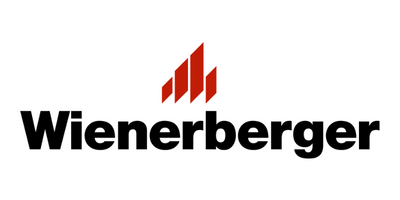Industry:
Manufacturing
Industry:
Manufacturing
Regions:
Europe
Solutions:
E-Invoice Receiving


Wienerberger placed Basware’s market-leading e-invoicing solutions at the heart of its procure-to-pay (P2P) operations to digitize its invoice handling process and help drive greater efficiencies across its financial operations.
Wienerberger is the world’s largest bricks and clay blocks producer and the market leader for clay roof tiles. Founded in 1819 and headquartered in Vienna, the organization is represented in 30 countries and operates 197 production sites.
In 2012, Wienerberger decided to invest in new P2P technology. A new invoice platform was introduced that integrated with their SAP ERP, at the same Wienerberger onboarded Basware’s OCR solution. Then, in 2019, the company went a step further and implemented Basware PDF e-Invoice solution to eliminate paper invoices altogether.
100%
Increase in PDF invoices processed
2.5X
FTE (full-time employee) productivity gain
100%
SAP integration
Wienerberger’s P2P and finance processes were originally heavily decentralized. With 51 European entities, a unified approach was required to ensure accuracy, transparency, and cost-efficiency.
In 2012, Wienerberger integrated a new invoice platform with SAP. At the same time, it implemented Basware’s OCR solution to help it digitize invoices. The ability for Basware to easily integrate with Wienerberger’s systems, responsible for the approval flow and automatic posting of invoices, was a huge driver.
AIDA is Wienerberger’s workflow for approving and digitally signing all its invoices. It’s also the legal archive for all invoices and their corresponding XMLs. The standard SAP Finance module (FI) masks are also accessed through AIDA so that the invoices can be posted. AIDA only works with XML files, and thus it can’t operate without an OCR like Basware’s.
In 2019, Wienerberger decided to implement a second Basware software solution, PDF e-Invoice, with the aim of entirely eliminating the error-prone manual paper invoices. Basware’s OCR solution had already helped Wienerberger make significant progress towards increasing direct postings. Still, Vuchkov and his team knew Basware PDF e-Invoice would allow them to achieve even higher efficiency.
Invoice recognition is critically important, and with Basware PDF e-Invoice, there is the real opportunity to achieve 100% invoice recognition.”Alex Vuchkov, Finance Expert, Wienerberger.
By 2021, Wienerberger handles around 400,000 invoices in transaction volume per year, and of those, approximately 100,000 are processed through Basware’s OCR or PDF e-Invoice solutions.
For Wienerberger, processing times for a digital invoice versus manual are reduced by 50%. The net result is the processing of 100K invoices digitally, delivering a 2.5x full-time equivalent (FTE) productivity gain for the P2P team.
I would recommend the Basware PDF e-Invoice solution to everybody. If you’re willing to digitize your invoices, this is by far the best way forward for a decentralized organization.
Alex Vuchkov, Finance Expert, Wienerberger
Moving invoices to Basware PDF e-Invoice has allowed for high rates of recognition. With onboarding in full swing and fewer OCR feedback forms being distributed, invoice recognition is on an upward trajectory.
The conversation with everyone in the business was an easy one. In fact, the transition was a no-brainer!”Alex Vuchkov, Finance Expert, Wienerberger.
Recognition is at 50% currently for Basware PDF e-Invoice, with the remaining 50% a result of legacy systems now awaiting upgrades.
Wienerberger is also satisfied with the flexibility of PDF e-Invoice in terms of how the solution accepts many layout variations. Header level capture comes as standard with the Basware OCR. While you can opt for line-level capture, the data accuracy is not guaranteed and is subject to additional associated with line fees.
In comparison, Basware PDF e-Invoice delivers line level as standard and is free of charge. This accuracy level has improved supplier relationships, increased automated matching rates, and provided the data needed for advanced and predictive analytics.
Basware’s solutions are currently operational in 19 of Wienerberger’s 51 European entities. In terms of the future, Wienerberger is focusing on expanding Basware PDF e-Invoice across all entities.
Expansion will be our focus in 2021, and most likely 2022 and 2023; from experience, we know it takes time to onboard each country. But, once achieved, the value is significant.”Alex Vuchkov, Finance Expert, Wienerberger